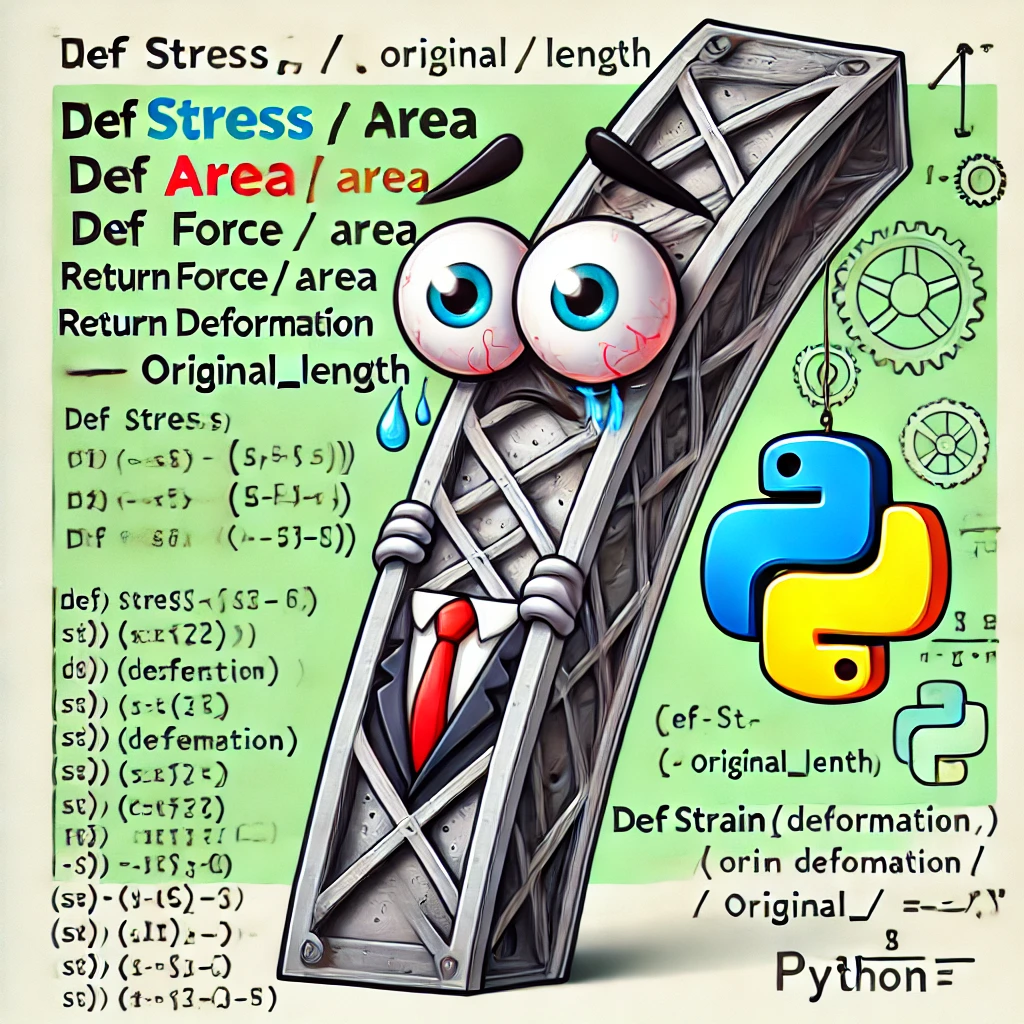📝 🏗️ Engineering Applications of Python Functions#

🔧 What are Functions?#
A function in Python is a reusable block of code that takes inputs, processes them, and returns an output. In engineering, functions help automate calculations, optimize workflows, and standardize repetitive tasks.
Why Use Functions in Engineering?#
Modularity: Break complex problems into manageable parts.
Reusability: Avoid rewriting the same code.
Scalability: Easily adapt calculations for different datasets.
Error Reduction: Encapsulate logic to minimize mistakes.
📌 Key Components of a Python Function#
A function in Python consists of several key parts:
# Function definition
def function_name(parameters):
"""Docstring explaining the function."""
# Code block (processing steps)
return output
Key Parts:#
defkeyword: Declares the function.Function Name: Should be descriptive and follow snake_case convention. – each word is separated by an underscore.
Parameters: Inputs that the function accepts.
Return Statement: Provides output to the caller.
Docstring: Optional but recommended for documentation.
Example: Calculating Stress in a Material#
def calculate_stress(force: float, area: float) -> float:
"""Returns the stress given force (N) and area (m²)."""
return force / area
# Example use
stress = calculate_stress(500, 0.005)
print(f"Stress: {stress:.2f} Pa")
Stress: 100000.00 Pa
Why This Matters?
Uses type hints (
: float,-> float) to improve code readability and debugging.Helps in structural analysis in mechanical and civil engineering.
🛠️ Required vs. Optional Parameters#
Python functions support both required and optional parameters:
Required Parameters#
Must always be provided when calling the function.
Essential for computations where missing data would break logic.
def calculate_pressure(force: float, area: float) -> float:
"""Calculates pressure given force (N) and area (m²)."""
return force / area
pressure = calculate_pressure(1000, 2)
print(f"Pressure: {pressure} Pa")
Pressure: 500.0 Pa
Optional Parameters with Default Values#
Useful when a parameter usually has a standard value.
Prevents unnecessary repetitive input.
def calculate_torque(force: float, radius: float = 0.5) -> float:
"""Calculates torque with a default radius (meters)."""
return force * radius
print(calculate_torque(200)) # Uses default radius of 0.5
print(calculate_torque(200, 0.75)) # Custom radius
100.0
150.0
Why Use Defaults?
Engineers often have industry-standard values but need flexibility.
Saves time and avoids redundancy.
🔍 Advanced Tools: Type Hints and Return Annotations#
Python provides type hints to specify expected input and output types:
def velocity(distance: float, time: float) -> float:
"""Returns velocity in meters per second (m/s)."""
print(type(distance))
return distance / time
velocity = velocity(100, 9.58)
<class 'int'>
Benefits of Type Hints#
Enhances readability.
Helps with debugging and documentation.
Works well with static code checkers like mypy.
Not enforced at runtime but can be used by external tools.
🚀 Key Takeaways#
Functions improve efficiency and accuracy in engineering calculations.
Required parameters ensure necessary data is provided.
Optional parameters improve flexibility.
Type hints make code more readable and easier to debug.
🎯 Start using Python functions to optimize your engineering workflows today!

